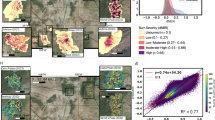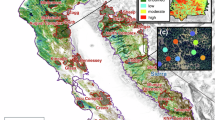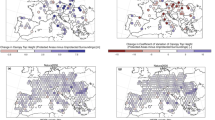Abstract
Background/Question/Methods
Ecologists have long emphasized the reciprocal interactions between spatial pattern and ecological processes in the creation of landscape mosaics. While an enormous amount of recent research has focused on the quantification of spatial patterns, efforts to infer process from pattern have been hindered by the presence of multi-scale, often confounding, drivers of pattern in many landscapes. At the mesoscale, Holling’s extended keystone hypothesis posits that spatially contagious disturbances such as fire are the dominant pattern-generating processes. To test this hypothesis, we used fire history data and discrete, small-footprint lidar remote sensing acquired over a 22 sq. km landscape of oak scrub in the Kennedy Space Center/Merritt Island National Wildlife Refuge area on the east-central coast of Florida. We binned the lidar return data into 1 m vertical height intervals for each 5 m x 5 m horizontal cell. Since community structure tends to recover by 7 years post-fire, we tested for significant differences between recently-burned (< 7 years) and unburned (≥ 7 years) patches with multivariate analysis of variance. To predict the burn status of each cell, we then used distribution-free, nonlinear support vector machine (SVM) classifiers, which have proven to be highly accurate for complex pattern recognition problems.
Results/Conclusions
We detected statistically significant differences in vegetation structure between burned and unburned patches for all of the dominant land cover types (upland non-forested, upland forested, wetland hardwood forest, and non-forested wetlands) in the study area. Initially, we obtained a predicted error rate of approximately 34% from the SVM classifier; by averaging the binned lidar data over a moving window of increasing size, however, we achieved substantial reductions in the predicted error rate for the SVM classifier. The optimal window size of 100 m x 100 m yielded a predicted misclassification rate of approximately 3%, an order of magnitude lower than the error rate obtained on the same data using a logistic regression classifier. These results suggest that, as predicted by the extended keystone hypothesis, fire disturbance is a dominant pattern-generating process at the patch scale in this oak scrub landscape. Furthermore, these results indicate that it is possible to use vertical vegetation structure, as represented by the binned lidar data, to predict burn status with a high level of accuracy. While our study employed a simple binary classification scheme, future research will focus on using SVM regression techniques to predict burn status with finer-grained classes of time since fire.
Similar content being viewed by others
Article PDF
Author information
Authors and Affiliations
Corresponding author
Rights and permissions
About this article
Cite this article
Angelo, J., Duncan, B. & Weishampel, J. Using lidar remote sensing and support vector machines to classify fire disturbance legacies in a Florida oak scrub landscape. Nat Prec (2009). https://doi.org/10.1038/npre.2009.3610.1
Received:
Accepted:
Published:
DOI: https://doi.org/10.1038/npre.2009.3610.1



